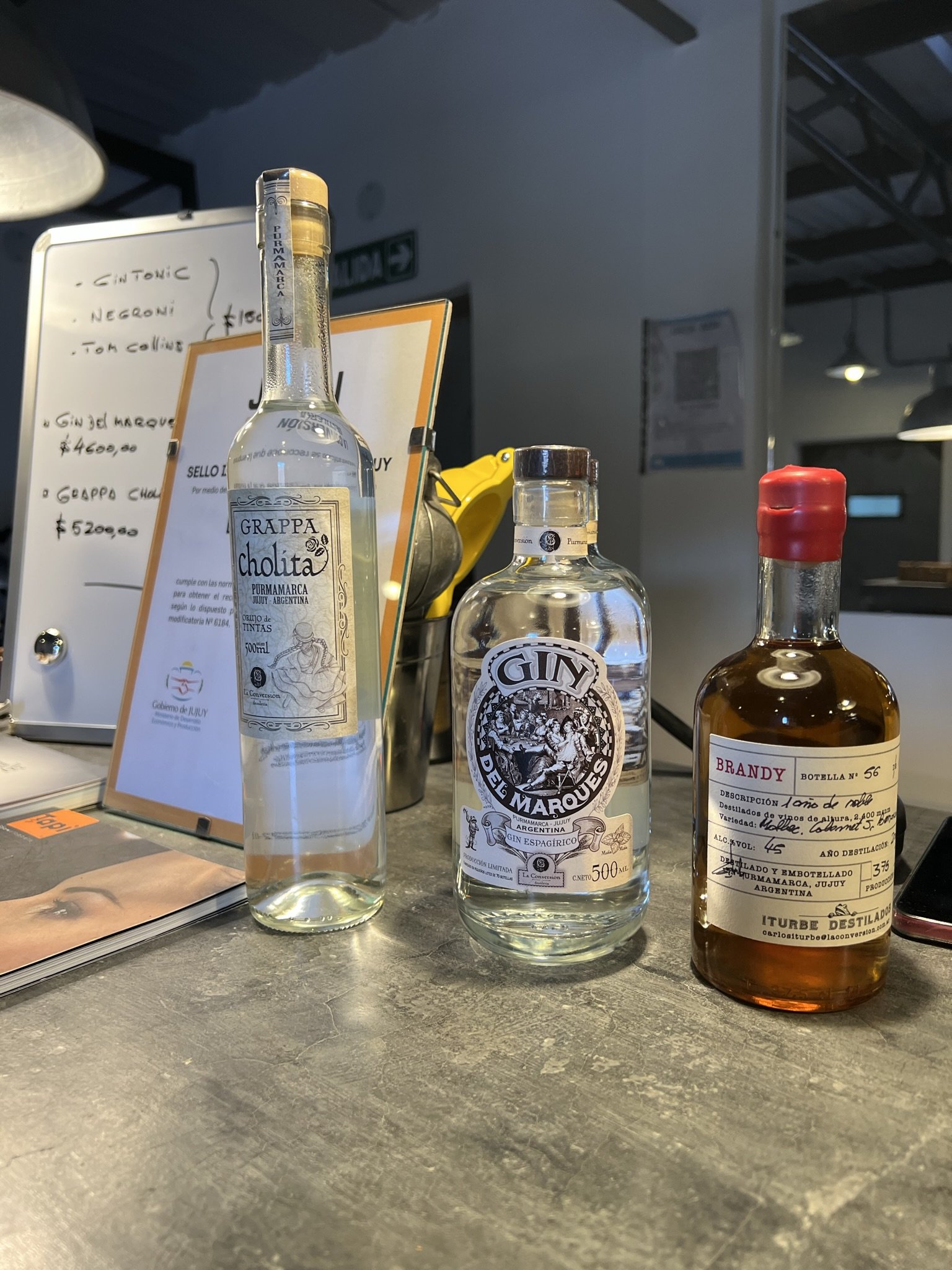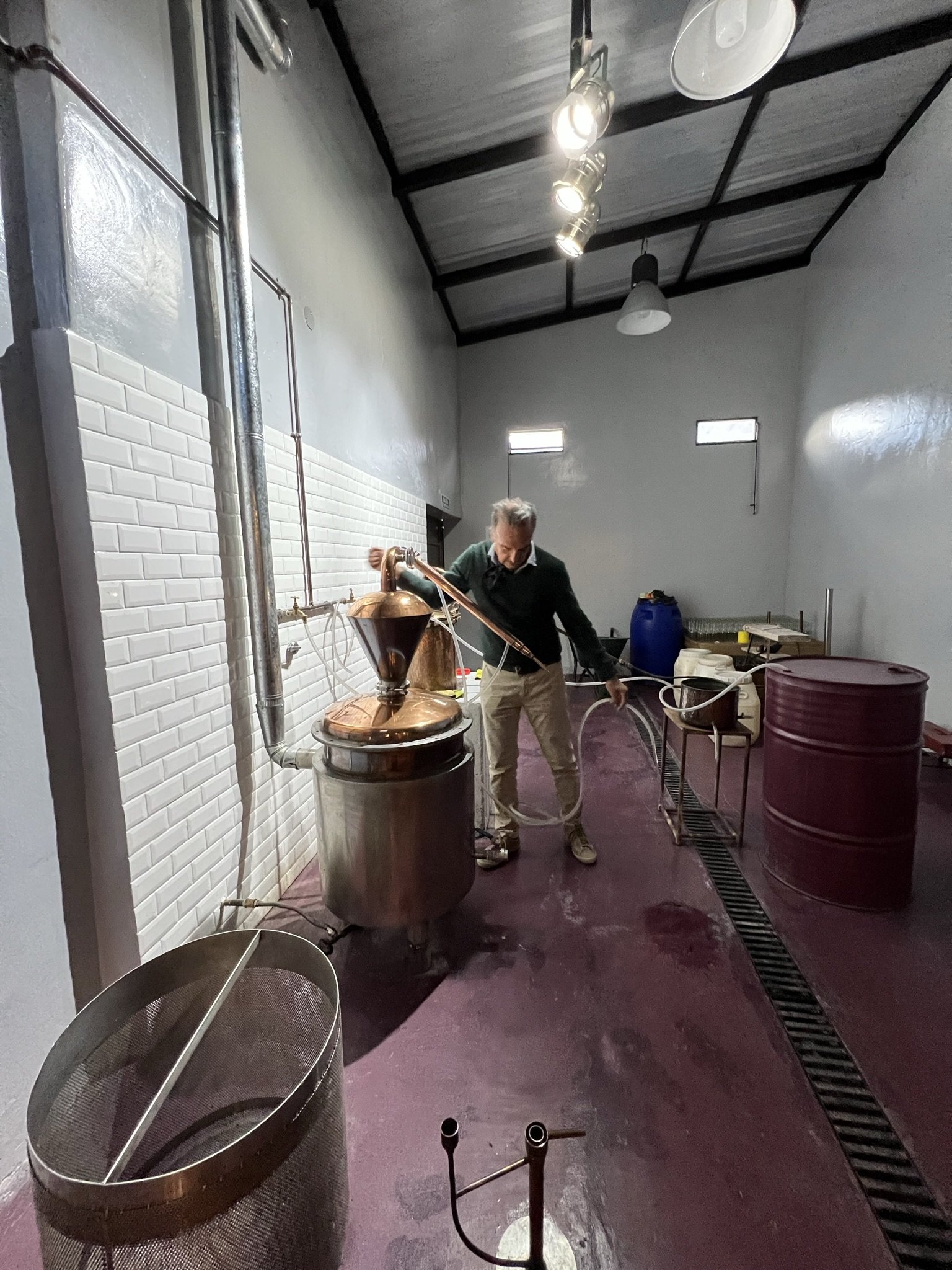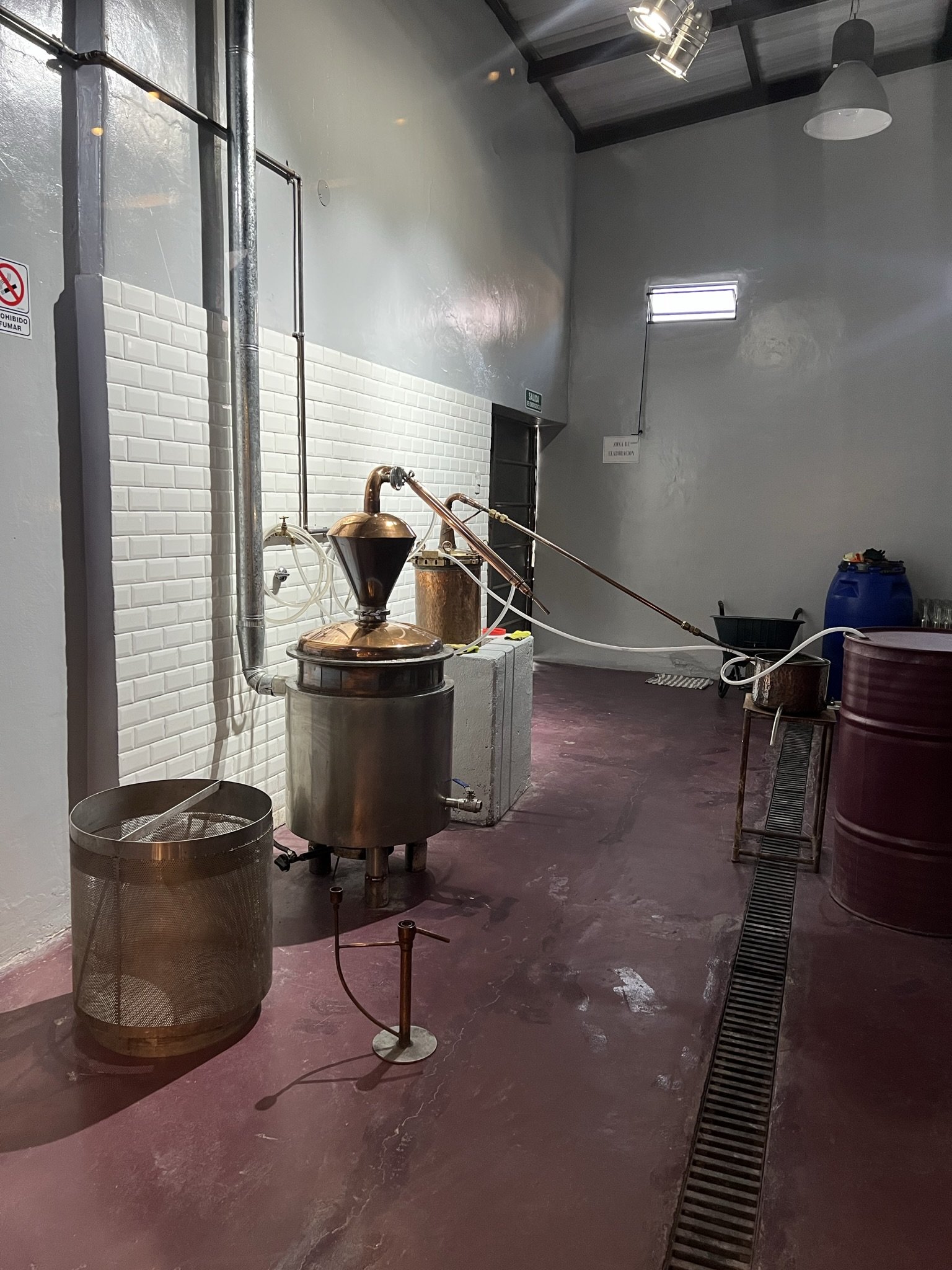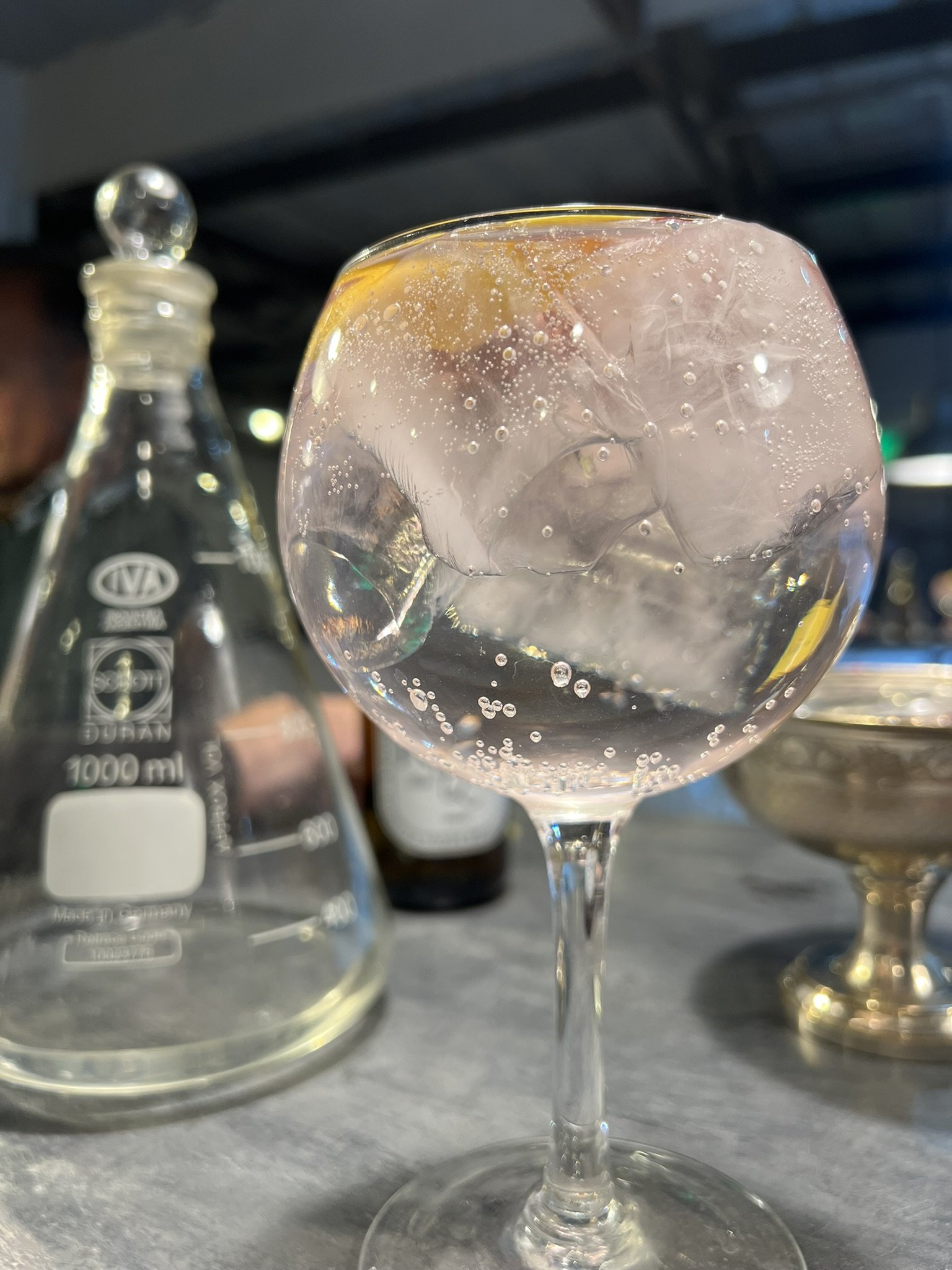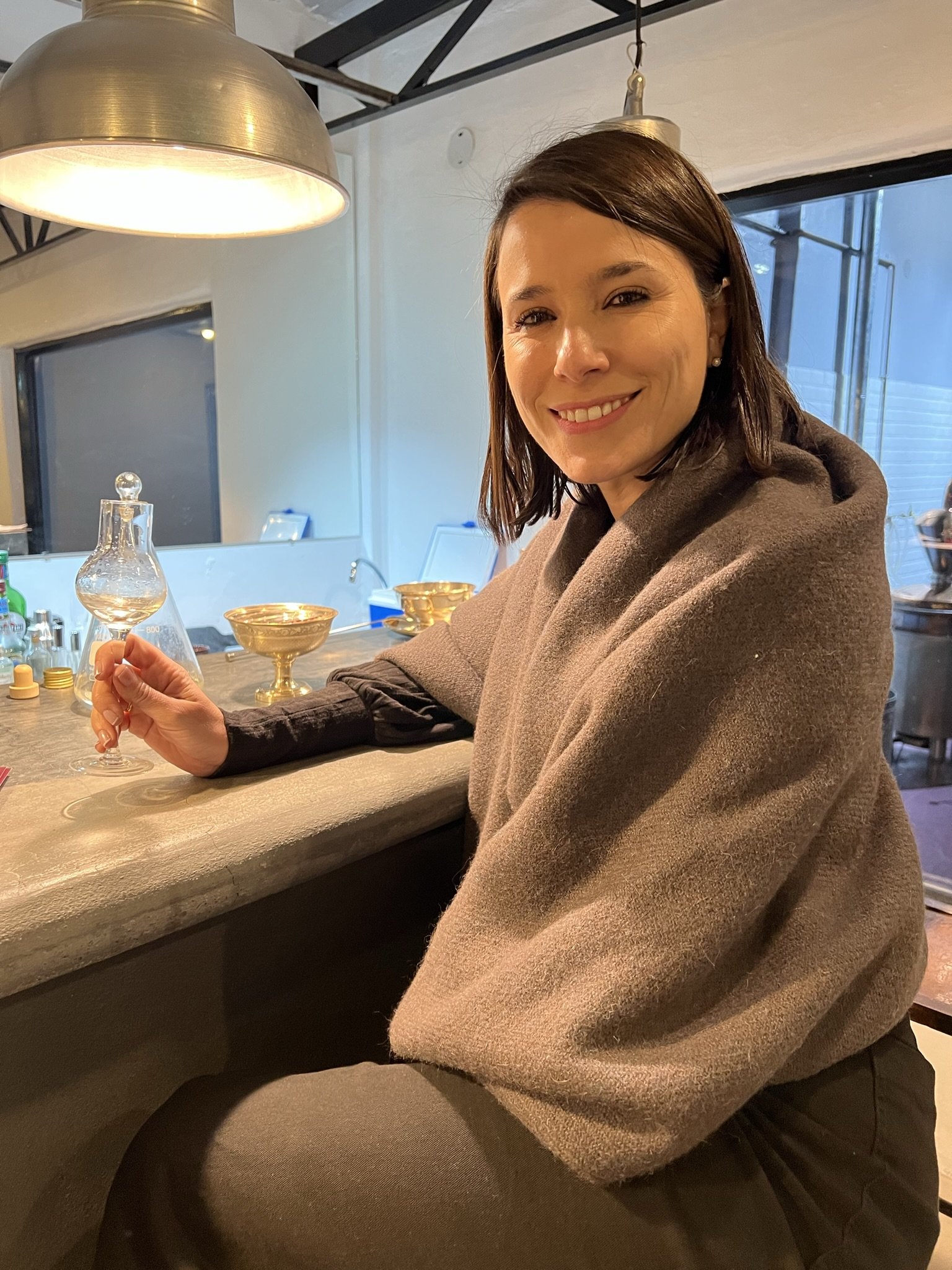La Conversión
Gin del Marqués Distillery At kilometer 6.7 of National Route 52, on the outskirts of Purmamarca, is La Conversión.
Its architecture is sober in gray tones, and it rises at the side of the road, among the bright colors that characterize the hills of the town.
We had tasted their gin some time ago, on our first visit to El Mesón, and we were automatically in love. It was, therefore, a pending matter to meet both its creator and his factory.
The appointment with the enormous Carlos Iturbe finally took place on a Friday in autumn, at 5:30 sharp.
Tall cactus guarded the entrance. Yana (black in Quechua) appeared to welcome us.
Everything was impeccable, spotless and beautiful in its reception room, with a clear industrial style, but complemented with details that speak of life, a lot of inner life. A large glass allows us to appreciate the alembic room, where alchemy takes place. And a large bar invites you to sit and enjoy the story of life, the story of Carlos and his gin.
We cheered the cult of anthroposophy and alchemy without even guessing about the sublime class of chemistry, physics, biology, astrology and spirituality (among so many eruditions) that we were about to receive.
With a military background, Carlos studied zootechnics and later became a great disciple of Dr. Segundo Santillán, a renowned anthroposophic physician from Salta, becoming involved in the study of medicinal plants.
Born in Buenos Aires, he moved to La Cumbre, province of Córdoba, where he devoted himself to learn about the humid way of alchemy, which involves plants.
By then, he formulated a disclaimer: "alchemy is not only philosophical but also practical". From there, we began to understand a little about integrality. The process involved in the making of his distillate is as much a part of him as he is a part of the gin he produces.
So many years of learning led him to realize his project of making a gin of maximum purity, a spagyric gin. Why spagyric, we wondered. Then, he continued the teaching: spagyrics is the wet branch dedicated to obtaining alchemical medicines.
Gin is spagyric because it fulfills the three alchemical principles in its interior, that is, in it one recognizes sulfur, mercury and salt.
First, the mercurial element is the 40% double-distilled cereal alcohol that stores the botanical information.
Then, the sulfur, that which each plant yields, delivers. Eleven botanicals perfume and season Gin del Marqués: juniper, coriander, cardamom, allspice, cinnamon, almond, peppermint, licorice root, angelica root, grapefruit peel and hibiscus.
And finally, salt. Once the botanicals are cold infused, they are extracted and dried in the shade. They are then heated until they are calcined (at which point the "eye of the tiger" appears) and the ashes turn whitish. These carbonates (salt - 80% potassium carbonate) complete the perfection of the drink, as they extract all that is left over, which is not pure.
This last operation generates in the gin greater authenticity of the distinctive flavors of each of the botanicals. Thus, Carlos explains that the whole process is a sanctification of the plant: that of achieving its purest state.
Hence the powerful perfume of its distillate and its smooth and elegant flavor.
This transformation is not only of the components of the drink, but of himself, as a person, urging us then as spectators to reflect on the benefits of purification and how healthy it is that maturity, that conversion to the purest in every moment of life. Very difficult to explain in words.
In short, Carlos uses the same technique he learned for his homeopathic preparations for the elaboration of a distillate of extreme purity.
Well, all this elixir is then bottled by hand and labeled. He produces about one hundred and fifty bottles per month of gin; about four hundred bottles per year of grappa and about seven hundred of brandy.
The Gin del Marqués bottle is imported from Italy. The glasses are made at the Etrusca glassworks in Florence. The cap is made of oak wood and the design of the distillery's coat of arms was commissioned to a Parisian graphic agency.
An extremely careful detail at each stage and in the whole. You can sense that Carlos makes his gin from the heart.
He has an old thirty-two liter alembic still, his first love, and another larger one that he recently had built. However, his intention is to continue distilling in small equipment that will allow him to achieve the care and attention that his idea demands.
Finally, with the precision that characterizes him, he prepared the drinks that would crown this unforgettable encounter. A negroni prepared with Marques Gin with vermouth from Rosario (Belgrano) and black cinnamon smoke and a gin and tonic with Premium tonic water (Nina) and lemon drops. Excellent, beautiful, softly scented and simply delicious.
The chatter that continued, as we enjoyed the drinks was so pleasant that we wanted to extend it. By the time it got dark and the date was winding down, he told us about his fondness for the stars, along with the observing equipment that highlighted the room.
Findings like La Conversión, his Gin del Marqués and its creator Carlos make @tripticity_ feel to have fulfilled the objective, that of being encouraged to discover, to leave the day to day and the known surroundings towards new horizons, as -perhaps- also his own path for maturity and why not for purification. Thank you, Carlos, for your wisdom!


